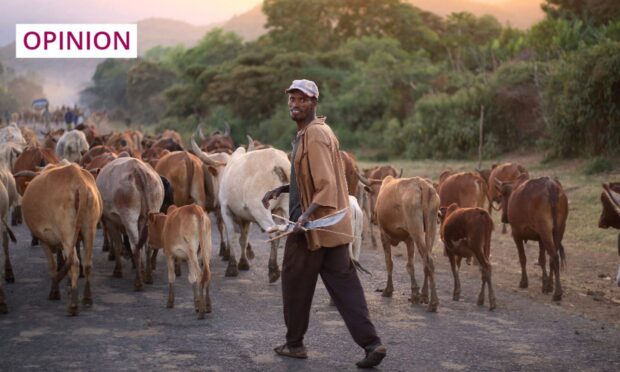As world leaders meet at the COP28 climate summit in Dubai, communities many miles away in South Omo, southern Ethiopia are living through a cycle of relentless and devastating extreme weather that is destroying homes and infrastructure, and breaking up communities.
They are resilient people – many are farmers, who live day to day from the land: grazing their animals and growing food to eat. They don’t use oil or gas, own cars, take long-haul flights or eat blueberries imported from Peru.
Why am I telling you this? To remind us that these communities have done the very least to contribute to the climate crisis yet, year after year, they are forced to endure relentless and destructive cycles of severe drought and flooding.
The injustice must end, and that is the principle behind loss and damage. It’s a phrase we don’t hear often enough, but it is language adopted by the UN and governments. It refers to the consequences of the climate crisis that go beyond what people can adapt to – such as extreme droughts turning farmland into dust, or super cyclones washing away homes and roads.
As I write from COP28 in Dubai, I can report that we have made progress. The ball is finally rolling on a Loss and Damage Fund; it’s a testament to the determination of negotiators from the Global South that we have got this far.
While we celebrate the progress, it is deeply concerning that the World Bank is to be the interim host of the fund. The fund must be transparent and ensure vulnerable communities are able to get swift and easy access to money. If these conditions are not kept, an independent arrangement will be needed.
Underlying all that, of course, is the vital need to see the Loss and Damage Fund filled with new and additional pledges.
Scottish Government honouring £1 million pledge
Taking a step back, it has been some journey to get to this stage. Two years ago, at COP26 in Glasgow, the Scottish Government was the first industrialised nation to pledge funding for loss and damage.
The success of that commitment was always going to be how and when the money is spent, so I am delighted to see Scottish ministers honouring their commitment to distribute £1 million for loss and damage through Scotland’s Humanitarian Emergency Fund.
The UK can do more to ensure its contributions to the #LossAndDamage fund are accessible to countries impacted by climate change as grants, not loans. Exchange of ideas on how to do this by @christian_aid with @alexsobel. The big one is to #makepolluterspay https://t.co/8CgDfd0Mbu
— Osai Ojigho (@livingtruely) December 6, 2023
This money will be channelled through four international development agencies, including Christian Aid, that work closely with communities impacted by climate change. The other recipients are Oxfam, Scottish Catholic International Aid Fund, and Tearfund for projects in Kenya, Zambia, and Pakistan respectively.
The funding from the Scottish Government will be used in areas that local communities have highlighted are urgent priorities. It means hope for those communities in South Omo that have been submerged once again after heavy rains caused rivers to burst.
Wealthy countries must realise their historic responsibility
Working through local partners, Christian Aid will repair damaged infrastructure like boreholes, invest in retraining and job-creating projects, provide psychosocial support for communities experiencing trauma, and roll out a veterinary programme to boost the depleted health of livestock.
For our Ethiopia country director Yitna Tekaligne, this is hugely welcome. He told me the announcement means we “will address some of the devastating impacts of climate induced loss and damage in Ethiopia.”
If the litmus test of good society is how we support those in need, we need to continue on this path and do more
While the funding will be well received, it is not the end of the story. It is only a drop in the ocean compared to the estimated fair share of loss and damage funding that Scotland owes, a sum between £1.15 and £2.5 billion.
Ultimately, if the litmus test of good society is how we support those in need, we need to continue on this path and do more. That is the message I will continue to take to world leaders at COP28 and beyond, until wealthy countries like our own fully realise their historic responsibility and shift resources to poor countries facing the gravest consequences of the climate crisis we created.
Osai Ojigho is director of policy and campaigns at Christian Aid

Conversation